(624 products available)






























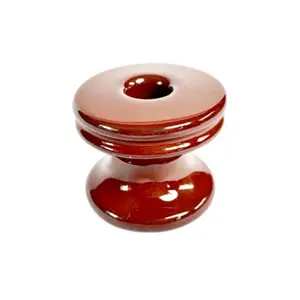











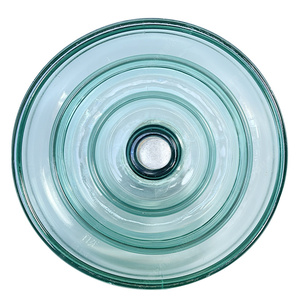
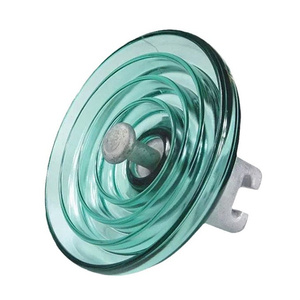
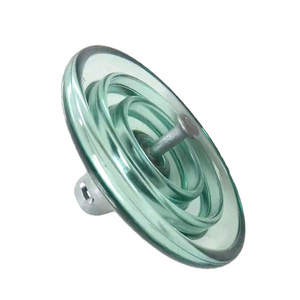
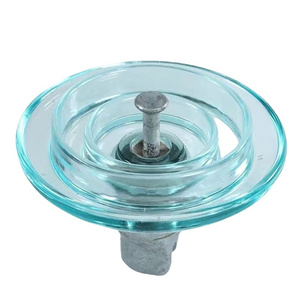





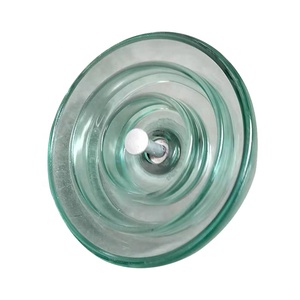

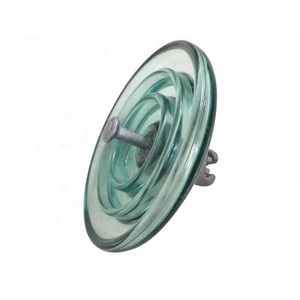

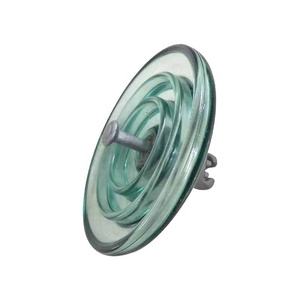







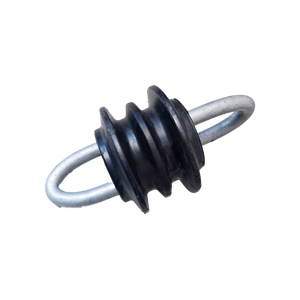







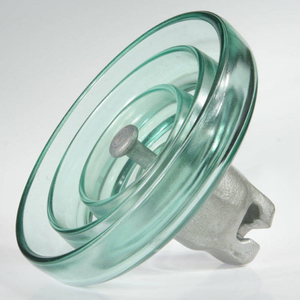


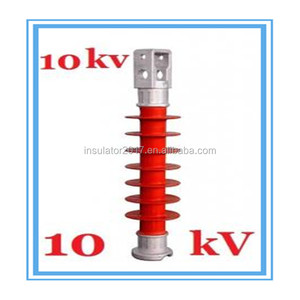



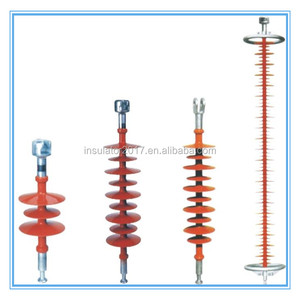







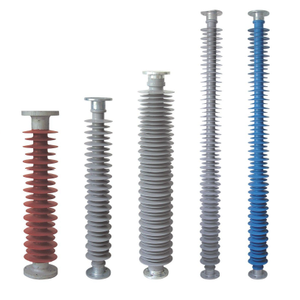


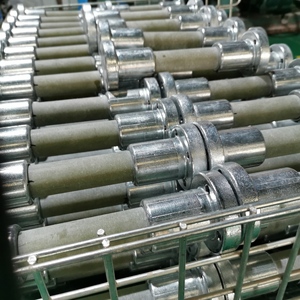


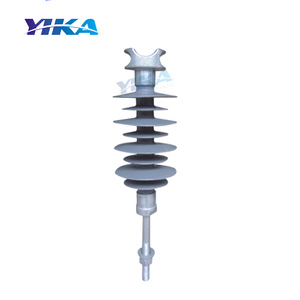










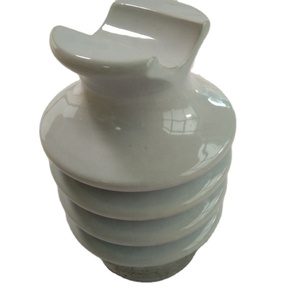
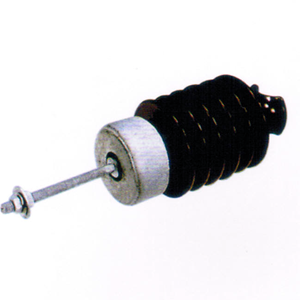







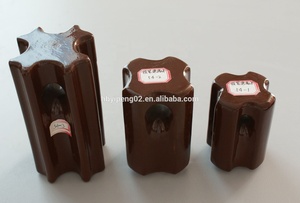


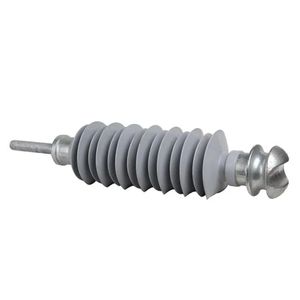
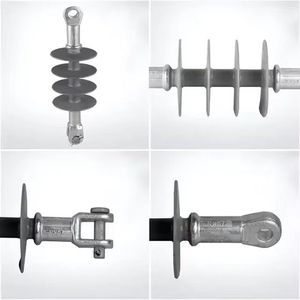









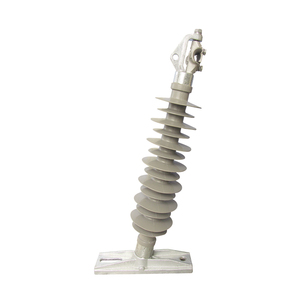
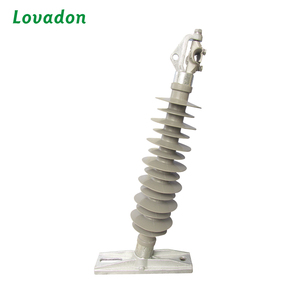
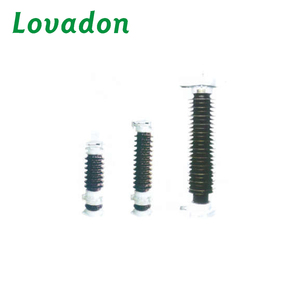


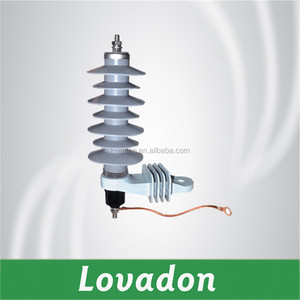



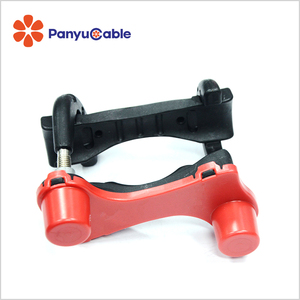


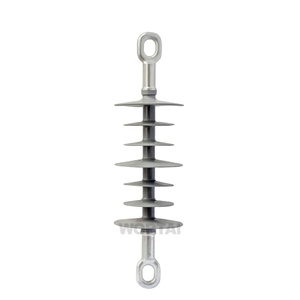

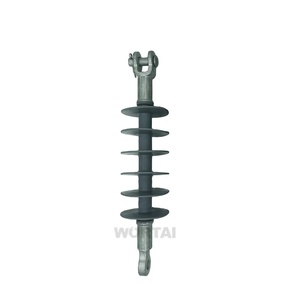
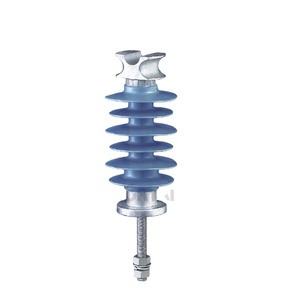
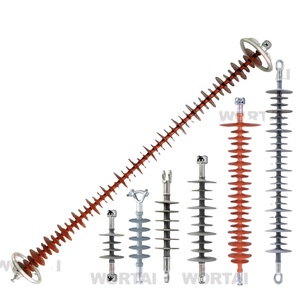











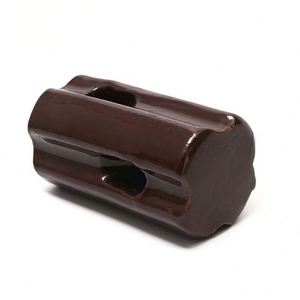

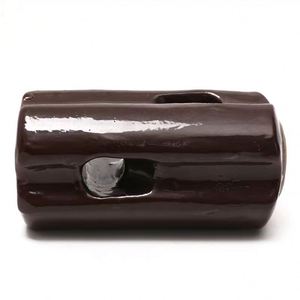


There are different types, and everyone's usage varies. Here are the most common types of line insulators:
These insulators are primarily used in overhead lines where the line voltage is not so high. They are made of a number of insulator units connected together in a cantilever style. This type of insulator is often made of porcelain or glass, though, in some instances, epoxy is used. Suspension insulators enable the wires to hang down and maintain an even distribution of electrical loads so that the structure does not become too stressed.
Strain insulators are used to withstand tension and, as such, are used in the lines where there are going to be some changes in the lines. The installation of strain ensures that the wire conductivity and constant tension are not variable. These insulators are seen in high-voltage lines, especially where the wire is attached to towers. Strain insulators are manufactured with several porcelain units, and they're usually embedded in a framework that was forged in steel to ensure the best tension and support balance.
Pin insulators are small units used in lower voltage power lines. They support conductors on poles. Pin insulators are most commonly made from porcelain, glass, or resin. In addition to their usage in the lower voltage power lines, pin insulators are also used in the distribution networks to hold the wires and provide insulation between the electrical lines and poles.
These are heavy-duty insulators often used in substations. They support high-voltage conductors and, therefore, must be very robust and durable. Again, post insulators can be made from porcelain, glass, or composite materials. Since these insulators are used in high-voltage areas, they ensure that the conductor is correctly insulated from the post or structure, preventing electrical leakage.
This is an insulator type that is widely used in the transmission lines of very high voltage. They are usually constructed by several insulator discs made of porcelain or glass, which are then suspended vertically. Insulators are used to isolate electrical components from conductors because of their excellent insulation properties. The most common example of a disc insulator is a suspension insulator for a transmission line in a very high voltage.
Insulators are extensively used in power transmission and distribution, where it is necessary to deliver electricity from power plants to end users. Insulators maintain the conductors elevated above the ground or at a pole, indicating electric lines without touching or interfering with the electric lines. It does this by preventing the electrical line from leaking to the ground, thus securing the carriers and providing a smooth and uninterrupted flow of electricity. Because of this, every utility company must have power line insulators, as transmission and distribution lines directly and continuously contact the flow of electricity.
Insulators help integrate renewable energy systems into the grid. For instance, solar panels and wind turbines use electrical power line insulators to connect the generated DC or AC power to the local electrical grid. In these systems, insulators help minimize power loss and improve efficiency while also protecting the equipment from over-voltage and electrical breakdown. Because renewable energy is green, inexpensive, and abundant, there is increasing demand for power line insulators for solar and wind energy systems.
Electric railway systems get the power they need to run through overhead lines suspended by insulators. The most common type of insulator used here is an inverted insulator that can withstand great mechanical stress due to the running trains and great electrical voltage. Insulators are, therefore, vital not only for effective train movement but also for the safety of the passengers. Because many countries use trains as one of the major transportation methods, insulators for the railway industry have to be manufactured in thousands or even millions to cater for the vast long-distance rail electrification systems.
This is especially true for industries that produce electrical equipment or dielectric goods like transformers, circuit breakers, and capacitors. Insulators, no matter how small they are, are used in these electrical devices to separate the conductive parts from epitomized ones safely. Insulators are usually used in equipment like substations and switchyards, where conductors are supported and insulated by different kinds of insulators. Insulators also protect electrical equipment from over-voltage and power surges generated by lightning or switching. This helps prolong the lifespan of all electrical gadgets while ensuring the safety of the manufacturing process.
Insulators are also used in telecommunications, especially in older systems that were traditionally powered by overhead lines. Insulators such as pin insulators and post insulators provide electrical isolation in the telecom cables to enable smooth communication signals over a long distance. Even today, with most fiber optic systems being put in place, insulators made of fiber optics are used to maintain the optical fibers within the cables and support them in a way that they do not break or get damaged. In telecom networks, insulators maintain signal integrity while helping prevent interruption in communication services, which are vital in today's businesses and people's everyday life.
Electrical power line insulators have numerous commercial applications aside from their industrial applications. They include:
Insulators are commonly used in the commercial sector to help with the distribution of electricity. They are used to support overhead power lines, keep conductors separated, and prevent electrical currents from passing through to the ground or to the supporting structures like poles and towers. These are crucial aspects of electrical grids. Insulators help with the efficiency of electrical transmission by minimizing energy loss and ensuring that electricity is safely delivered to homes, businesses, and public facilities regardless of the environment.
The demand for electricity is increasing, and electricity from the solar energy system contributes to this demand. With electric line insulators, solar panels and wind turbines can be integrated into the electric power distribution network. Insulators will work by isolating electrical components and making sure the generated electricity is safely and reliably integrated into the grid. Insulators play an important role in energy efficiency and grid stability in this renewable energy technology.
Insulators are also used in telecommunications infrastructure such as telephone and internet cables. Fiber optic cables, for instance, where insulators are used in the support system to reduce the strain on the delicate fibers, thus ensuring that network services are stable and uninterrupted. Given the increasing demand for high-speed internet and reliable communication services, the role of insulators in telecommunications is growing.
Insulators are used in commercial real estate and infrastructure development, especially when electrical systems are installed. This includes those in the HVAC systems and lighting fixtures, where electrical line insulators ensure that the electrical system is effectively separated from the building structure and from each of its components, providing a smooth and safe flow of electricity. This improves not just energy efficiency but also the safety and reliability of these electrical systems. Furthermore, insulators are used in fire protection, especially in buildings with high electrical density to contain or lessen the spread of fire across electrical conduits.
Insulators are installed in public infrastructures such as street lighting, traffic signals, and transportation systems. They support power lines used in street lighting and traffic signals and provide electrical separation between the lines and the poles or other structures in order to ensure public safety. Insulators can also be incorporated into other public infrastructures, such as the design of electrical components, to enhance their safety, efficiency, and effectiveness.
Electrical power line insulators should ideally have the following technical specifications:
Dielectric Strength
The dielectric strength is a measurement of how much voltage an insulator material can handle before it starts breaking down and conducting electricity. It, therefore, indicates how well a material can insulate against electrical current. This is particularly important for electrical power line insulators, as these insulators must be able to withstand voltage levels that can range from several thousand to millions of volts. Basically, the higher the dielectric strength of a material, the better it is for insulating conductors in high-voltage power lines.
Mechanical Strength
Insulators must be mechanically strong enough to support their own weight and that of the conductors, especially in difficult weather conditions such as wind and ice storms. The mechanical strength of insulators is usually evaluated by looking at the material's tensile strength, which is its ability to resist being pulled apart, and compressive strength, which is its ability to not break under pressure or compression.
Weather Resistance
Insulators used in outdoor electrical power lines have to be made tolerant to UV radiation, temperature extremes, humidity, and pollution. Materials like porcelain, glass, and composite materials are commonly used because they are durable in outdoor environments. Weather resistance also looks at performance under wet and dry conditions, as the insulators will tend to get wet after rain, high humidity, or fog, which can lead to contamination.
Load Capacity
This is the maximum amount of electrical load an insulator can take up until the point where it fails. Every electrical line has a certain electrical load it carries, and the insulator used has to be capable of withstanding this load in order to maintain insulation. The load capacity of insulators varies as a function of its design, material, and mechanical strength. All things considered, a good-quality insulator should be able to handle the load that the conductors within the power lines will carry.
Mounting Insulators
Install the insulators for electrical lines on the supporting structures using bolts or clamps to tie them securely, even though the type of mounting will differ from one type of insulator to another. Suspension insulators should be hooked into the supporting structure so that the load is evenly distributed. Strain insulators must be mounted on parts of the structure that will experience tension. In low-voltage power lines, pin insulators should be mounted on the pole tops.
Securing Conductors
Once the insulators have been mounted, the next is to secure the conductors to the insulators by using the manufacturer provided details. Conductors are tied to the insulator in suspension style for balanced loading and secured to the strain insulator to pull the wire and ensure proper stability. The pin insulator holds the conductor against the pole or cross arm. Make sure conductors are properly aligned and forming the normal condition for electrical power transmission. In this, double-check the height and ensure the proper distance between the wires and the ground and among the wires themselves for safety use.
Testing Insulator Integrity
After installation is complete, one must conduct a test on the integrity and performance of the insulators. This can be achieved by using a megohmmeter to measure the insulation resistance. The insulator should not pass any voltage to the ground or supporting structure. Any degradation of this insulator performance could lead to electrical leakage, which may pose safety problems or power loss. Conduct regular inspections on installed insulators to ensure they meet the manufacturer's requirements regarding safe operations.
Regular Inspections
It is maintenance of electrical power line insulators. Physical inspection allows the identification of worn-out, cracked, or broken insulators early enough before they lead to power interruptions, sagging lines, or even safety hazards. Use infrared thermography to detect heat patterns that may indicate electrical failure in the insulators.
Cleaning
Pollution build-up can contaminate insulators, decreasing their electrical insulation effectiveness. Clean the insulators to improve their performance. In many instances, especially in coastal areas where salt deposits are high, on foggy regions where pollution might be present, the best squeegee is high-pressure water with a brush to eliminate the deposits. Maintenance of the insulators ensures that they are effective in insulating electrical lines even in cases where pollution is prominent in the environment.
Crack Monitoring And Repair
Insulator material degradation, especially in porcelain and glass, comes with cracks that, if left unchecked, will cause major reliability issues. Repairing minor, surface-level cracks may be hard, while deeper cracks will require immediate replacement. Proper monitoring of insulator cracks followed by prompt repairs helps ensure the continuity and safety of electrical power transmission.
Stress Testing
Due to environmental conditions like extreme heat or severe storms, mechanical stressors can affect insulators. It is advised to conduct a mechanical stress evaluation to check the integrity of the insulator; a routine evaluation keeps the lines safe during seasons that subject insulators to additional load. Insulators showing signs of deformation should be replaced immediately.
Moisture Sealing
Most electrical power line insulators used outdoors should be capable of sealing moisture ingress, as moisture penetration could lead to electrical breakdown. Conduct long-term preventive measures and regular inspections, especially during wet seasons. This will help in sealing the insulator so that no moisture gets into it; moisture in the insulator reduces its lifespan.
A. Insulators are manufactured primarily by using porcelain, which is a form of ceramic material, and glass. Anyway, composite materials have been used recently for their unique features and advantages. All these materials provide great electrical insulation properties in outdoor environments. Each material possesses its own advantages, making it suitable for different applications and voltage ranges.
A. The kind of material used to make the insulators will directly affect the performance, reliability, and safety of the power transmission lines. The right material will allow the insulator to perform effectively, increase overall system reliability while decreasing power interruptions, maintenance cost, and safety risk. The choice of this material, especially in areas that are severely exposed to environmental elements, determines the longevity and effectiveness of the line.
A. Harsh environmental factors like extreme temperatures, UV radiation, humidity, and pollution can degrade the insulators over time. This is commonly observed with porcelain and glass insulators exposed to coastal or industrial environments with high levels of air pollution. Regular maintenance, as well as using weather-resistant materials, helps address environmental degradation and helps extend the life of the insulators.
A. Insulator design and the material used are the two main methods manufacturers employ to withstand high voltage. Using thicker insulator discs or layers increases the creepage distance, minimizing the voltage across the surface. Also, the use of high-strength materials and improved geometrical design increases mechanical strength. Both voltage and mechanical loading are well supported to ensure safe operations.
A. Yes. Contamination such as pollution, bird droppings, or even dust will decrease the creepage distance of the insulator, leading to electrical leakage, which in turn results in power interruptions. Regular cleaning and inspection will minimize contamination effects and ensure the insulator maintains its effectiveness.
A. Insulators undergo rigorous testing because of the strict regulations they must meet. These insulators are put under high-voltage tests to determine their dielectric strength, mechanical strength tests to check the capacity of the material to support loads, and environmental simulation tests like aging, weathering, and pollution to mimic long-term field conditions. These tests ensure that the insulators can meet safety and performance standards in various environments and applications.